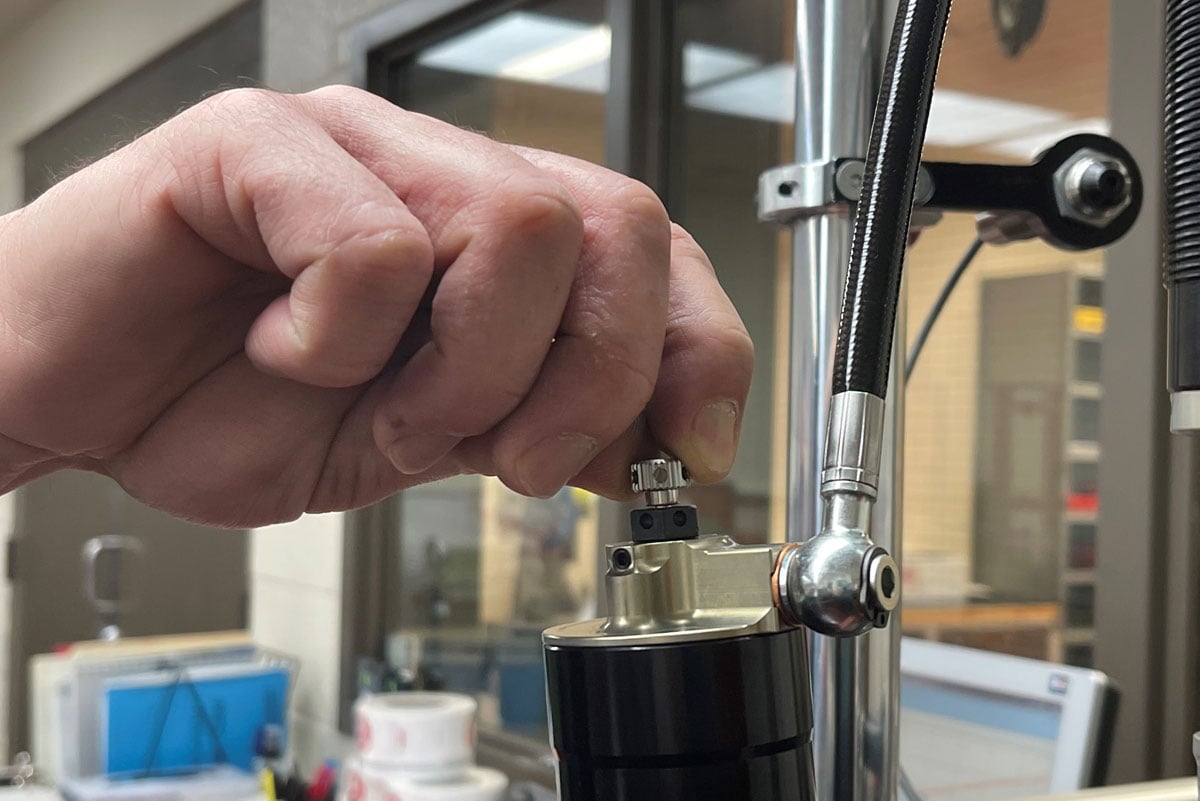How to Adjust Low and High-Speed Damping to Optimize Shock Performance

January 7, 2022

Understanding and adjusting the suspension on your car or bike can seem like a daunting task.
You might settle for a less than optimum setup because you're overwhelmed by the number of settings and variables in a suspension to get it set up correctly for your driving style and preferences.
But, knowledge without proper application is useless. If you don't regularly adjust your shocks as part of your overall suspension strategy, you're leaving valuable performance gains in the shop. This article will discuss how you can set up your shocks and adjust low and high-speed damping for maximum performance.
Low and High-Speed Damping Adjustments for Optimal Performance
Shocks have a primary job: control the speed at which your wheels move up and down and dissipate the energy stored in the springs. They perform this job by stopping your suspension from compressing and rebounding too quickly. Controlling these variables allows for a better driving experience.
Compression Damping is how quickly or slowly the suspension is allowed to compress.
Rebound Damping is how quickly or slowly the spring extends back to its original position.
Our previous article highlights precisely what damping is, the difference between low high-speed damping, and how your adjustments make a difference to your car or bike.
Why Would You Adjust Your Low and High-speed Compression?
The way your car handles determines how confident and successful you will be while driving it. To find the perfect balance between confidence and speed, you'll need highly-adjustable shocks, the proper setup, and the right team to help you make incremental changes.
If you feel like your suspension is too loose or too stiff, you'll want to make adjustments.
Entry into corners, navigating the apex of a corner, and exiting the corner - these all require a great driver with a suspension setup able to handle the forces placed on it. An excellent setup combines spring rates and damping adjustments to achieve the desired result. To optimize performance, your style and preferences must be the priority.
Some drivers like a loose suspension and more movement, others like a stiffer suspension and a more stable platform - there is no "right" way. The key here is that your suspension is set up YOUR way so you can perform at your best.
Making Adjustments To Your Damper Settings
Remember that low and high-speed shock settings work in tandem. If you adjust one, it will impact the other, and it's essential to find the perfect balance. Our article on low-speed damping describes situations that would require damper adjustments.
BEST PRACTICE: The great thing about race suspension tuning is that you can always return to your base settings. With so many parts and pieces available to tweak, it's easy to lose track of what you changed and how much you changed it. The best thing you can do is take detailed notes throughout the tuning process to ensure you can go backward in the process. We have two worksheets available here to help with your recordkeeping.
Check out our FREE DOWNLOAD: Shock Build and Shock Setup/Lap Time Worksheet
In this free download, we provide both our Standard Shock Build Sheet, which is a great way to keep all your shock builds organized, and a Setup/Lap Time Sheet, a great tool to help improve your communication and record keeping of your chassis setup.
How to Adjust Damper Settings
On Penske shocks, turning the adjuster clockwise will stiffen compression, counter-clockwise will soften compression. When you turn the adjuster clockwise to stiffen compression, the shock will compress slower, making your car or bike feel stiffer and more supportive.
When you decrease compression damping by turning the adjuster counter-clockwise, the shock can compress faster and will feel softer and more supple.
Penske low-speed adjusters are the splined knob on 8760 type reservoirs.
High-speed damping adjustments are made using the 1/2" hex on an 8760 or knob on the 8300 type.
How do you Measure the Difference?
It's wise to start with a baseline setting.
Let's use acceleration as an example.
When your car or bike accelerates, the rear suspension will squat as weight transfers from the front end. The front spring load as well as how much front rebound damping controls how quickly the weight transfers from the front to the rear. Rear spring rate and rear shocks control how much the car squats and balances out once you're traveling.
If you feel like your car or bike is wallowing (squatting too much) and you lose a bit of control, that's an indication that your low-speed compression is too soft. You can stiffen it and retest it until you're happy.
On the flip side, if you accelerate and feel like your car or bike is too high, you can loosen your low-speed compression. It's challenging to feel a difference if you only adjust with one click. Try three or four clicks at a time and find a happy medium.
It is recommended that you have a dyno graph showing the adjustment range of your particular shock. When adjusting low and high-speed damping, it's good to have data to compare to. If the change is good or bad, you understand how much or how little of a change that was.
Want to learn more? Check out Spring Rate or Damping? How to Stiffen Rear Suspension Properly
You're Not in This Alone
It can be daunting to know which adjustments you need to make to optimize the performance of your shocks, and the knock-on effect it will have on your performance.
Custom shocks built to driver style and preferences that are highly adjustable provide the return from a performance standpoint.
Penske Racing Shocks provide quality, American-made custom shocks and play an active role in the setup of your suspension, as well as providing continued support as you make adjustments. With shock specialists available to answer any questions, you're in good hands.
To learn more about our S3 process (Shocks + Setup + Support), reach out to us here and get the ball rolling.

%20(1).png)
